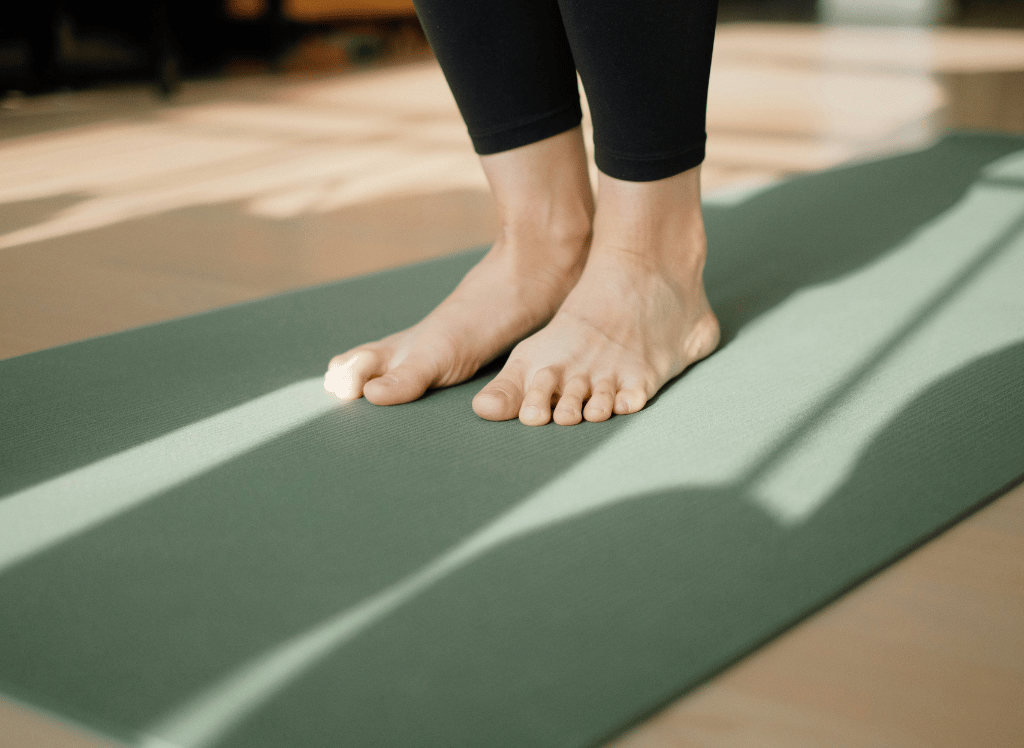The journey of healing from trauma can be a daunting one. With various therapeutic approaches available, it’s essential to find the right fit for your unique needs.
We’ll delve into the world of somatic therapy, exploring its principles, techniques, and benefits, and providing practical tips for finding a qualified therapist and incorporating somatic exercises into your healing journey.
From understanding the complex nature of trauma to learning how somatic exercises can help alleviate its effects, this guide will equip you with the knowledge and resources to take charge of your recovery, fostering a deep connection with your body and mind in the process.
Key Takeaways
- Somatic exercises provide an effective means of recovering from trauma by helping individuals recognize and reduce physical reactions to traumatic events.
- Somatic therapy can help foster the connection between mind and body, allowing for emotional distress management.
- Various somatic techniques such as yoga, body scanning & progressive muscle relaxation can be used in combination with other therapeutic approaches to create a holistic healing plan for trauma recovery.
Understanding Trauma and the Need for Somatic Exercises
Trauma is an emotional response to deeply distressing or disturbing events, manifesting in physical, emotional, and psychological symptoms, including post traumatic stress disorder (PTSD). Often, these experiences leave an indelible mark on our bodies, affecting our nervous system and muscle tension.
Somatic therapy exercises offer an effective means of trauma recovery by aiding individuals in identifying and easing their physical reactions to traumatic events, thus diminishing trauma-related symptoms.
Physical sensations, integral to the mind-body connection, assist in accessing and processing memories of traumatic events stored within the body, thus playing a significant role in trauma recovery. Somatic exercises promote grounding and centering through the body by addressing both the emotional and physical components of trauma, thereby enabling clients to express and monitor bodily sensations and emotions, and diffuse the fight-flight-or-freeze response.
Defining Trauma
According to Somatic Experiencing International, trauma is defined as an ongoing dysregulation of the nervous system and bodily experiences. Recognizing that trauma is a natural response to distressing events, SEI views it as an interrupted process that requires resolution.
Unlike animals, which instinctively recover from trauma by discharging excess energy through actions like yawning and shaking, humans often suppress these counter-responses. Somatic therapists help individuals learn to release this stored energy, facilitating healing.
Effects of Trauma on the Body
Trauma can lead to disordered functioning of the nervous system, sometimes resulting in post traumatic stress disorder (PTSD). Moreover, chronic stress can have far-reaching physical effects, such as elevated blood pressure, weakened immune system, and prolonged muscle tension, which can impact respiratory and cardiovascular systems. Various body movement techniques, like yoga and tai chi, can help alleviate these physical effects and promote overall wellbeing.
The physical symptoms of trauma are not to be underestimated, as they can significantly impact an individual’s quality of life. By understanding the effects of trauma on the body and incorporating somatic exercises into the healing process, individuals can begin to address these symptoms and work towards a healthier, more balanced state.
The Mind-Body Connection in Trauma Recovery
The acknowledgement of the mind-body connection significantly aids trauma recovery. Brief somatic experiencing sessions can be a helpful tool in addressing trauma-related symptoms, allowing individuals to better recognize and manage their emotional distress.
Inclusion of body awareness, movement, and mindfulness into the therapeutic process allows individuals to harness their body’s wisdom and traverse the healing process more effectively. Furthermore, recognizing and managing the physical manifestations of trauma can lead to improved relationships, emotional well-being, and overall quality of life.
Key Principles of Somatic Therapy
At the heart of somatic therapy lies the recognition of how our body sensations respond to stress and the importance of progressing through that process. Core techniques of somatic therapy, such as somatic experiencing therapy, involve discussing stressors or past traumas with a therapist while being guided to be more mindful of the physical sensations that manifest during the conversation. This practice stems from the work of Thomas Hanna, Ph.D., who introduced somatic therapy in the 1970s as a means to help people increase their bodily awareness through movement and relaxation techniques.
The goal of somatic therapy is to facilitate the release of physical manifestations of trauma to heal the related emotional aspects. Interoception, or conscious internal awareness, plays a critical role in SEI, as it helps individuals become more attuned to their body’s sensations and reactions to stress. Therapists can avert overstimulation of the nervous system and encourage healing by centering on self-soothing behaviors and managing clients’ reactions.
The Role of the Nervous System
The nervous system is integral to somatic therapy, as it bridges the connection between the body and the mind. The somatic nervous system, responsible for voluntary movements and sensory information, is a key factor in somatic therapy, allowing individuals to become more conscious of their physical sensations, emotions, and tension patterns.
Through somatic therapy techniques like body awareness, movement, and mindfulness, the nervous system can be regulated and healing can be achieved on both physical and psychological levels.
Body Awareness
The development of body awareness is a key factor in identifying and easing emotions linked to traumatic events. Somatic therapy techniques, such as grounding exercises and body scanning, help individuals stay present and connected to their physical environment during trauma recovery.
Cultivating greater bodily awareness enables individuals to discern the connection between their physical sensations and emotional experiences, thereby enhancing the effectiveness of trauma recovery.
Integration of Talk Therapy and Physical Techniques
Somatic therapy combines traditional talk therapy with physical interventions to facilitate healing. This integrative approach acknowledges the interconnectedness of the mind and body and is designed to target both psychological and physical elements of health.
Inclusion of physical exercises, movement therapies, yoga, or other body-based practices in the therapeutic process can augment individuals’ healing and recovery from trauma.
Top Somatic Exercises for Trauma Recovery
Somatic exercises are activities that involve both the body and the mind to assist individuals in their recovery from trauma. Examples of somatic exercises include yoga, body scanning, and progressive muscle relaxation. Practicing these exercises can help individuals release stored tension and alleviate trauma-related symptoms, leading to a more balanced and grounded state.
Incorporating a variety of somatic exercises into their healing journey enables individuals to harness the power of the mind-body connection, thereby fostering resilience, emotional regulation, and overall well-being. In the following sections, we’ll provide an overview of different somatic exercises, including grounding techniques, breath work exercises, and movement-based practices, that can support trauma recovery.
Grounding Techniques
Grounding techniques are essential tools in somatic therapy that help individuals remain present and connected to their physical environment during trauma recovery. These techniques can include:
- Placing hands in water
- Touching objects
- Deep breathing
- Redirecting attention away from negative thoughts or worries.
By practicing grounding techniques, individuals can better manage flashbacks, anxiety, and other symptoms related to trauma, fostering a sense of safety and stability.
Breathwork Exercises
Breathwork exercises, such as pursed lip breathing, diaphragmatic breathing, and breath focus technique, can promote relaxation, self-regulation, and stress relief. Engaging in breathwork helps individuals become more aware of their breathing patterns and develop greater control over their physiological responses to stress.
Regular practice of these exercises, as supported by a randomized controlled outcome study, can contribute to reduced trauma-related symptoms and improved overall well-being.
Movement-Based Practices
Movement-based practices, such as somatic dancing, yoga, and other body movement techniques, provide an expressive outlet that supports emotional release and physical wellbeing. These practices encourage individuals to enter a state of receptivity, allowing for spontaneous movement and greater connection with their body.
By incorporating movement-based practices into their healing journey, individuals can strengthen the mind-body connection and foster resilience in the face of trauma.
Finding the Right Somatic Therapist
Selecting an appropriate somatic therapist is pivotal to a successful healing journey. A qualified therapist should have:
- Appropriate certifications and training in somatic therapy
- Experience working with trauma survivors
- A thorough understanding of somatic therapy principles and techniques
- Familiarity with related fields such as psychology or counseling
When searching for a somatic therapist, it’s important to evaluate their qualifications, experience, and approach to therapy. You may also utilize online resources, such as:
- The American Psychological Association’s Psychologist Locator
- The National Association of Social Workers’ Find a Social Worker
- The American Association for Marriage and Family Therapy’s Find a Therapist
to locate a suitable therapist.
Before your first session, take some time to reflect on what you hope to achieve through therapy and consider any specific concerns or goals you may have. During the initial session, be prepared to discuss your physical and emotional wellbeing, past experiences, and any present issues you’re dealing with. By setting clear expectations and finding a therapist that aligns with your needs, you can create a strong foundation for a successful therapeutic journey.
Qualifications and Experience
Assessing a therapist’s qualifications and experience is a vital step towards finding a therapist that best fits your healing journey. A somatic therapist should possess:
- Appropriate certifications and training in somatic therapy
- Experience working with trauma survivors
- A comprehensive knowledge of the principles and techniques of somatic therapy
Additionally, they should adopt an individualized approach, creating a secure and nurturing environment in which you can explore and process your trauma.
Recommendations and Online Resources
To find a reputable somatic therapist, consider asking for recommendations from friends, family, or mental health professionals, as well as consulting online directories and resources such as Harvard Health, Forbes, Psychology Today, Everyday Health, and Sandstone Care. One option is to reach out to a mental health professional who specializes in somatic therapy.
These resources can help you find a qualified therapist who aligns with your needs and preferences, ensuring a supportive and effective therapeutic experience.
Preparing for the First Session
Prior to your initial session with a somatic therapist, spend some time reflecting on your therapy objectives and any specific concerns or goals you might have. Be prepared to discuss your physical and emotional wellbeing, past experiences, and any present issues you’re dealing with during the initial session.
By setting clear expectations and finding a therapist that aligns with your needs, you can create a strong foundation for a successful therapeutic journey.
Additional Support for Trauma Recovery
In addition to somatic exercises, other therapeutic approaches can complement your trauma recovery process. Eye Movement Desensitization and Reprocessing (EMDR) and Sensorimotor Psychotherapy are two such approaches that can enhance your healing journey by addressing both the emotional and physical aspects of trauma.
Practicing self-care and making lifestyle changes can also play a vital role in trauma recovery. Focusing on aspects such as sleep, nutrition, and social support can help reduce tension, enhance physical and mental wellbeing, and create a sense of security and stability.
By combining somatic exercises with additional therapeutic approaches and self-care practices, you can create a comprehensive and holistic healing plan tailored to your unique needs.
Eye Movement Desensitization and Reprocessing (EMDR)
Eye Movement Desensitization and Reprocessing (EMDR) is an evidence-based psychotherapy treatment that helps reduce distress related to traumatic experiences. During EMDR sessions, individuals focus on the traumatic memory while engaging in bilateral eye movements or other forms of bilateral stimulation.
This structured therapy helps individuals process and reprogram traumatic memories, leading to decreased distress, enhanced emotional regulation, and improved functioning in everyday life.
Sensorimotor Psychotherapy
Sensorimotor Psychotherapy is an integrative approach that combines talk therapy, mindfulness, and somatic movements to support individuals in healing trauma and detrimental attachment patterns formed in early childhood. This body-centered approach helps individuals recognize the connection between body posture, breathing, and muscle tension and their thoughts, feelings, and emotions.
By integrating the principles of Sensorimotor Psychotherapy into your healing journey, you can further enhance your recovery from trauma.
Self-Care and Lifestyle Changes
The integration of self-care and lifestyle modifications into your trauma recovery process is instrumental in promoting overall wellbeing. Prioritizing sleep, proper nutrition, and social support can help reduce stress, improve physical and mental health, and create a sense of safety and security.
By adopting a holistic approach to healing, you can support your recovery journey and build resilience in the face of trauma.
Somatic Exercise FAQs
Please browse through our most Frequently Asked Questions section to learn more.
What are somatic exercises for trauma?
Somatic exercises for trauma are body-focused and involve breathing exercises, dance, mindfulness and other movement techniques to help soothe the nervous system and release trauma and tension.
What are examples of somatic exercises?
Somatic exercises involve any physical activity completed with intention and awareness. Examples of somatic exercises include yoga, body scans, breathwork, posture exercises, grounding exercises, certain forms of dance, Laban Movement Analysis, and Eye Movement Desensitization and Reprocessing (EMDR).
What is the somatic approach to trauma therapy?
Somatic therapy is a body-focused approach developed by Peter Levine in the late 1970s that helps people release damaging, pent-up emotions in their body through techniques such as acupressure, hypnosis, breathwork, and dance. Somatic Experiencing is a body-centered approach to treating PTSD that expands beyond thoughts or emotions associated with trauma to include natural bodily responses.
How to heal trauma in the body?
Healing trauma in the body requires calming the body's response to it and recognizing and processing the mental and emotional aspects. Exercise can help reduce adrenaline levels and stress while also releasing endorphins, as well as specific therapies like cognitive processing therapy, prolonged exposure therapy, EMDR, somatic experience (SETM) and talk therapy. Finally, a movement practice has been found to be particularly beneficial for healing trauma.
What qualifications should a somatic therapist possess?
A somatic therapist should have the relevant certifications and training, experience working with trauma survivors, and a strong understanding of somatic therapy principles and techniques.
Summary
Somatic exercises provide a powerful and innovative approach to trauma recovery by focusing on the connection between the mind and body. By understanding the impact of trauma on mental and physical well-being, and incorporating somatic exercises into the healing process, individuals can foster a deep connection with their body and mind, leading to improved resilience and emotional regulation.
Embarking on the journey of trauma recovery can be challenging, but by finding the right somatic therapist, incorporating somatic exercises, and complementing your healing process with additional therapeutic approaches and self-care practices, you can create a comprehensive and holistic healing plan tailored to your unique needs. Embrace the power of the mind-body connection and take charge of your recovery today.








